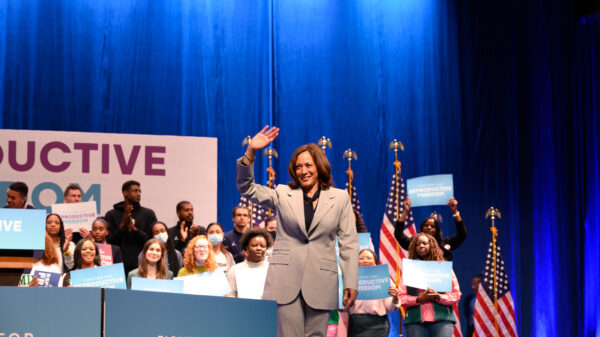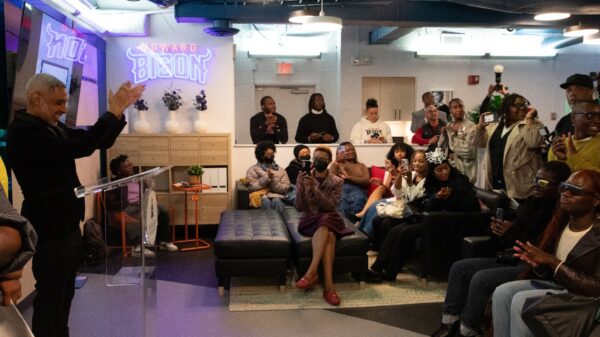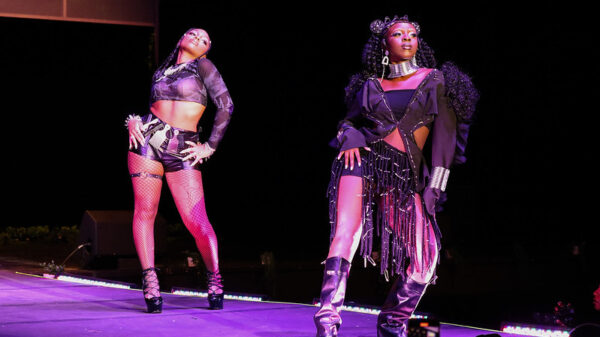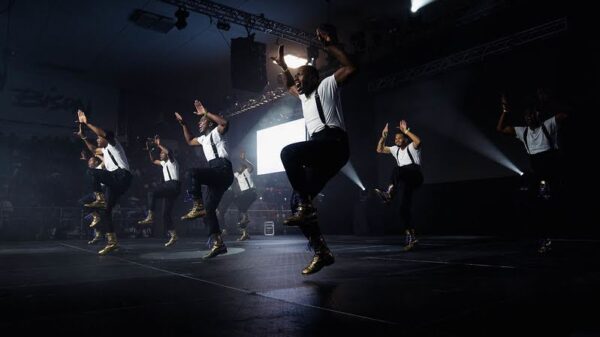Mayor Muriel Bowser of Washington D.C. initiated the Juvenile Curfew Enforcement Pilot earlier this month. The program, covering seven designated focus areas of D.C. with a high frequency of youth crime, applies to children 16 years old and younger between 11 p.m. and 6 a.m. Sunday through Thursday, and 12:01 a.m. and 6 a.m. on Saturday and Sunday.
The nation’s capital has experienced a surge in violent crime this year. According to the Metropolitan Police Department’s (MPD) D.C. crime data, as of Sept. 5, there has been a 29% increase in homicides compared to the same period in 2022, with 184 reported so far in 2023.
The Juvenile Curfew Act of 1995 has been in effect since 1995 but has not been routinely enforced. The pilot program is one of many strategies Bowser and Police Chief Pamela Smith are using to reduce violent crime, which has risen to 38% from last year, with property crime up 29%.
Hugh Goffinet, a senior history major and Africana studies minor from Oklahoma, is concerned about the curfew enforcement’s impact. “The immediate assumption is that anyone young-looking is worthy of being stopped. That affects every Howard student, especially those off campus,” he said.
Goffinet also discussed the potential of racial profiling within the designated focus areas. “Imagine the implications of your government assuming that because you’re a Black youth, you’re inherently a potential criminal. This reinforces the narrative that Black youth are an implied enemy in D.C. while youth from other racial backgrounds are ‘innocent,’” he said.
The enforcement involves multiple city departments, including the MPD, the Department of Youth Rehabilitation Services (DYRS), the Child and Family Services Agency (CFSA), the Department of Behavioral Health (DBH), and the Department of Human Services (DHS).
According to the Executive Office of the Mayor, under the Juvenile Curfew Enforcement Pilot program, MPD will be granted the ability to transport youth from designated focus areas to the DYRS.
A map depicting DC Curfew Zones. Map created on Atlist.
The seven areas covered in the Juvenile Curfew Enforcement Pilot include District 1 (Chinatown and Navy Yard), District 3 (U Street area), District 3 (Howard University/Banneker), District 4 (14th Street between Otis and Spring Road, N.W.), District 4 (4000 Georgia Avenue, N.W.), District 6 (4400-4600 Benning Rd, S.E, and District 7 (1300 Congress Street, S.E.).
DYRS will monitor young individuals until they are reunited with a parent or guardian the following morning. Previously, when an MPD officer encountered a youth violating the curfew, they were required to remain with the youth at an MPD District station until a parent or guardian was located.
The pilot program aims to return MPD officers to their patrol duties during critical hours instead of staying with the youth. The program also aims to introduce adolescents and their families to DYRS services, enabling agency staff to provide rehabilitation and ongoing support to address underlying issues and reduce youth involvement in criminal activities.
“No group is at higher risk of harm than youth engaging in the most risky and dangerous criminal activity,” Deputy Mayor for Public Safety and Justice Lindsey Appiah said in a press conference on Aug. 17.
“Our goal is to engage with young people and their families before that happens and provide them with the kinds of interventions that we know help. This pilot will offer us one tool to do just that,” Appiah said.
“The vast majority of our young people are doing the right thing — they are back in school, are involved in extracurriculars, and… at night, they are where they need to be — supervised and safe,” Bower explained.
“But we need that to be true for all of our young people, and if we have kids and teenagers who are not in safe situations, we need to connect with those families,” Bowser said.
“The goal is not to arrest young people. We want them safe and off the street,” Appiah said.
According to the arrest statistics for juveniles, 2022 had the most juvenile arrests in three years, and D.C. officials believe 2023 is following a similar pattern. The juvenile arrest data for January -June 2023 shows that MPD made 63% more arrests in June 2023 than in June 2022.
Goffinet believes the program’s rehabilitation focus may cause more harm than good. “For a program focused on rehabilitation, putting children in a police cruiser and holding these likely scared kids overnight and letting a parent get them in the morning sounds more traumatizing than helpful,” Goffinet said.
In addition to the curfew pilot program, the District will add 50 CCTV cameras throughout the city and has committed to doubling the number of cameras over the next two years. This year’s violent crime surge includes incidents near or on Howard’s campus.
In July, a 14-year-old was arrested and charged with the murder of Rafael Adolfo Gomez, a construction worker on campus. The shooting occurred near a construction site where work is being completed on a new heat-and-power plant on Howard’s campus.
NBC Washington reported that police believe three other young individuals were involved in the crime, and thus far they have identified another potential teenage suspect, but no one other than the 14-year-old suspect has been arrested.
Additionally, on Aug. 14, four Howard students were assaulted and robbed at Howard Plaza Towers East, resulting in one victim being stabbed during the assault and later hospitalized.
In response, Howard has taken several safety measures, including increasing security personnel, establishing safety corridors, installing cameras and organizing safety events. Additionally, the university reconstituted the Campus Safety Council.
In the university’s statement on further commitment to student safety, former Howard President Wayne A. I. Frederick condemned recent violent youth crimes.
“There is simply no need for young people, or anyone, to engage in behavior that is offensive, threatening, or harassing towards others; and we condemn any such behavior directed especially toward our students,” Frederick said.
Frederick also announced that the university has been actively engaging with MPD and the District’s officials to address safety concerns on and around the campus.
“The Mayor’s administration is committed to the same things we are regarding security — with particular focus on Howard students and the entire campus community,” Howard’s 17th president said regarding a conversation with Bowser on the security and safety of Howard students.
Frederick noted that relying solely on policing is not the only solution Although MPD was present during recent events, Frederick emphasized the need for timely and effective resolutions to ensure the safety of Howard students from city law enforcement, which he believes was lacking in the recent incidents.
Evan Kristopher Denson is a sophomore economics major and political science minor from Chesapeake, Virginia, who expressed his concerns about the increase of crime in the area.
“It’s sad. I want my home to be a safe place for everyone to grow and prosper without having to look over their shoulder,” Denson said.
He believes that recent crime incidents near or on Howard’s campus have unintended consequences on interpersonal relations in the Howard community.
“It has made relations between women and men strained in terms of communication because of fear and the craziness going on unless you are a familiar face. I believe this hurts potential opportunities and friendships,” Denson explained.
Denson also “I believe the safety precautions are a good change, however, they are not perfect. We need a communication course so we can relate to each other and know we have more allies than enemies around us,” Denson said, emphasizing the need for improved communication among students.
At least four people were shot and killed on the first night of the juvenile curfew enforcement, however, Appiah confirmed to ABC7 News that no juveniles were taken to the facility during the first night of the curfew. Between Sept. 1-2, nine shootings across D.C. left five people dead and at least six others wounded.
Among the victims in the Friday night shootings were two teenagers, 19-year-old Mikeya Ferguson of Southeast D.C. and 18-year-old Cle’shai Perry of Northwest Washington, who died at the hospital.
The following day, three juveniles were shot, including 15-year-old Zyion Turner, sadly making him the fourteenth person under 18 to be killed in D.C. this year.
Regina Banks is a senior African American studies major and history minor from Philadelphia who works as a teacher at John Lewis Elementary School, and expressed her concern about the impact of gun violence on students.
“Last school year, a student who went to a pizza shop around the corner from our school with his parents was in a drive-by [shooting] and can’t use his legs,” recounting an incident involving one of her students.
“After that incident, many of our students were confused about gun violence in the community, and, in a way, hurt,” Banks said.
She also mentioned the challenge of discussing sensitive topics with younger students and emphasized the role of teachers in addressing these issues and supporting their students.
“Our job is to have these conversations, address students’ fears and reassure them that they have our support and safety within our classroom – even if we can’t ensure their safety outside of it,” Banks said.
“I think a lot is put on the teachers,” said Catherine Quinlan, an associate professor of science education at Howard University’s School of Education.
“Can teachers engage students more? Yes. Will it necessarily prevent this? I don’t know about that,” Quinlan said.
Due to her 16-year teaching experience, Quinlan worries about the role of education, resources and community dynamics in addressing the challenges faced by young people regarding curfew enforcement and community engagement.
“When I came to DC, I saw the lack of infrastructure in parts of D.C. Metro with predominantly Black folks,” she said.
Quinlan noted how disparities in infrastructure and resources play a role in the increase of youth crime and how these challenges can impact the behavior of young individuals, viewing it as a cry for help.
“I see the lack of resources across public schools, some are less equipped than some of the best schools in the city,” Quinlan said.
Quinlan also acknowledged Bowser’s efforts and believes the mayor is doing what she can with the resources afforded to her.
Nevertheless, she continues to question the necessity of a curfew and believes that resources should be prioritized. “Should kids be on the street at night? Of course not, [but] I’m wondering what resources have been taken away due to the curfew policies,” Quinlan explained.
Howard students who are 17 and under are encouraged by the university to comply with the curfew enforcement, and all students should always carry their Howard-issued photo ID with them.
Frederick expressed that recent incidents do not represent the entire city. “In no way do we believe recent incidents represent all of D.C. Unfortunately, this small group of young people are conducting themselves in such a way that they are adding to a negative narrative,” Frederick said.
“I’ve shared before that when I was young, my father used to tell me there’s nothing good in the street after 11 o’clock,” said Bowser.
“We want our kids home [and] safe. If they’re not, we want families working with us to get their kids the help that they need,” said the mayor.
Copy edited by Alana Matthew









